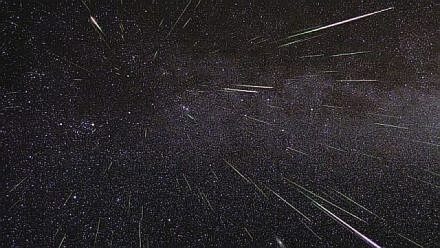
Watch for sky shows this month. The Draconids, North Taurids (Northern Hemisphere, South Taurids in Southern Hemisphere) and the Orionids are all shooting across the sky.
If lucky enough to have a cloudless sky, very little moonlight and no street and commercial lights, you may catch a shooting star. Actually meteorites merely look like falling stars as they streak across the sky.
Light from the moon won’t interfere with seeing the Draconids that peak the evening of Oct. 9, 2018 because the moon will be in its new phase. The Taurids are around all month but don’t worry, you can still catch them Nov. 8 during the next new moon phase.
The Orionids will be peaking around Oct. 21 but the moon will be waxing gibbous (more than half) as it heads to becoming a full moon Oct. 24.
So how many meteorites might be up there during each shower?
Well, it’s hard to predict the Draconids. They may be producing only a few per hour but the good news is that you don’t have to stay up late to watch for them and some years they produce quite a show with more than 500 meteorites an hour.
Their radiant point is from the head of Draco the Dragon near the stars Eltanin and Rastaban and they are best seen when the Dragon is highest in the evening sky. The Draconid shower happens when the Earth crosses the orbital path of Comet 21P/Giacobini-Zinner.
The Taurids, originating from Taurus the Bull, are residue from the Comet 2P Encke. There aren’t a lot of them per hour and they may peak towards the end of October when the moon is still in its bright waning gibbus phase. But the good news is that they are around all month. Watch for them early morning before dawn. The other good news is that they are very bright balls of fire.
The Orionids typically fly across at 20 meteorites per hour but have been known to quadruple that number. Look for quick streaks of bright light. They’re fast.
Best Orionids watching time is before dawn when the moon sets by 1 a.m. and meteorite numbers are highest. The particles come from Comet 1P/Halley. The Orionids are named for their radiation point which is near the constellation Orion (The Hunter). In October, Orion is best visible around 2 a.m.
For good sky reference sites visit NASA, Earth/Sky, Space and Time and Date.
